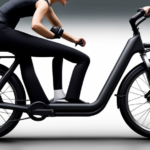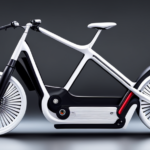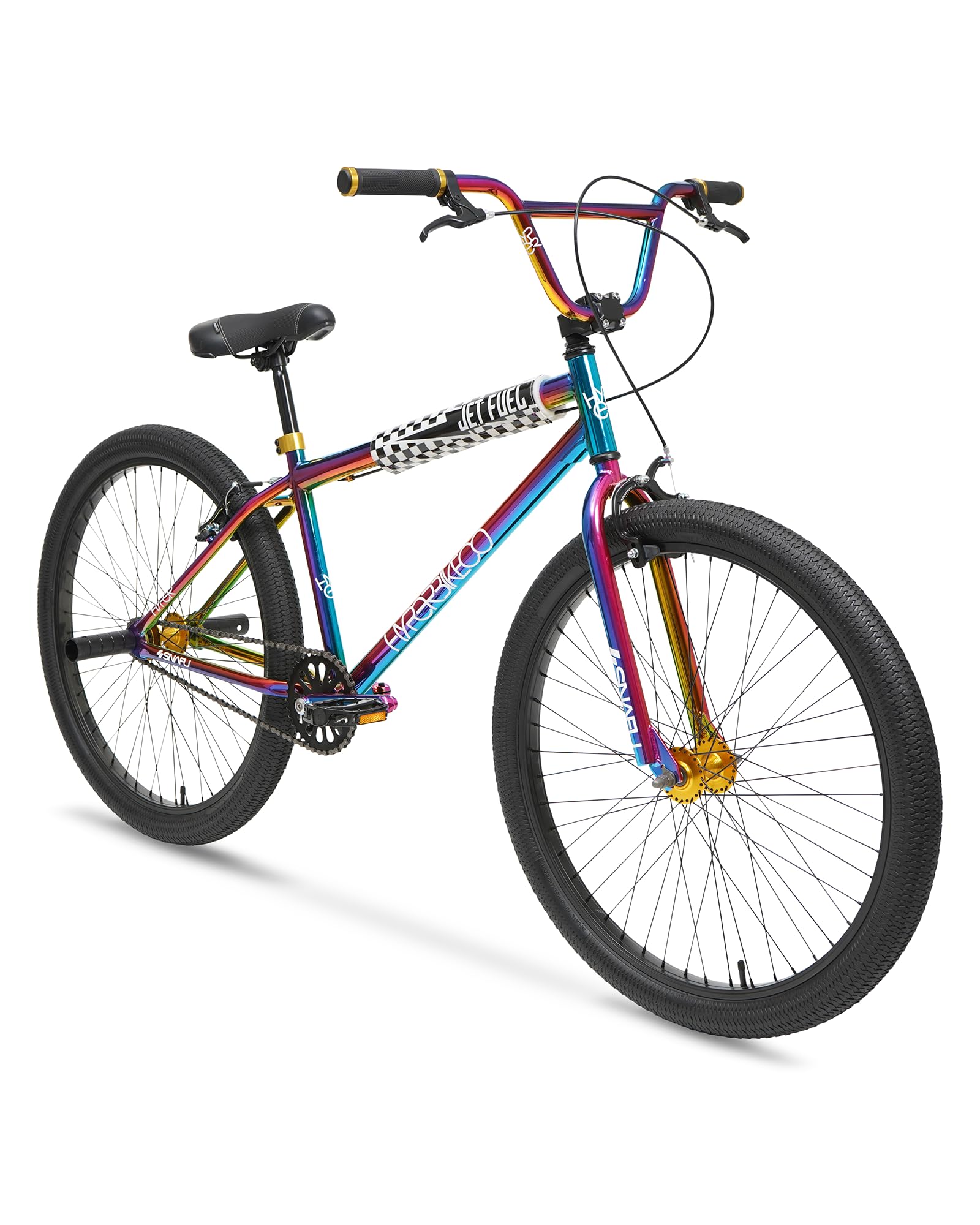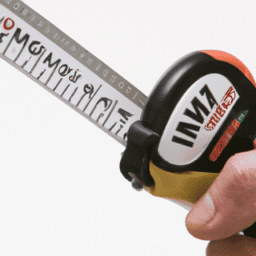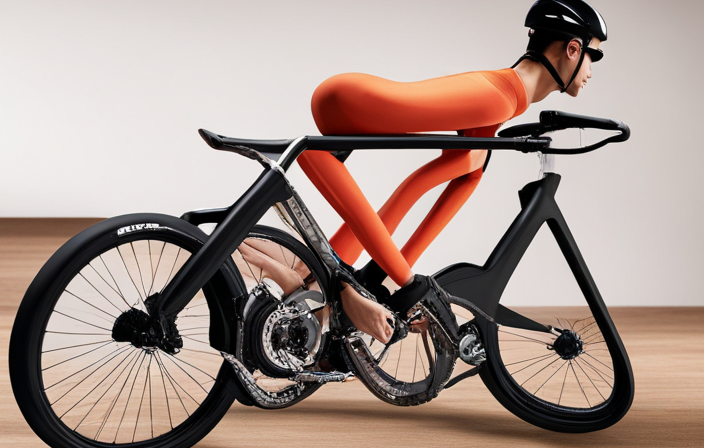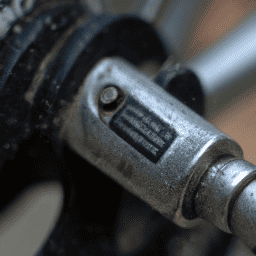Electric Bike
What Type Of Batteries Do Electric Bikes Use
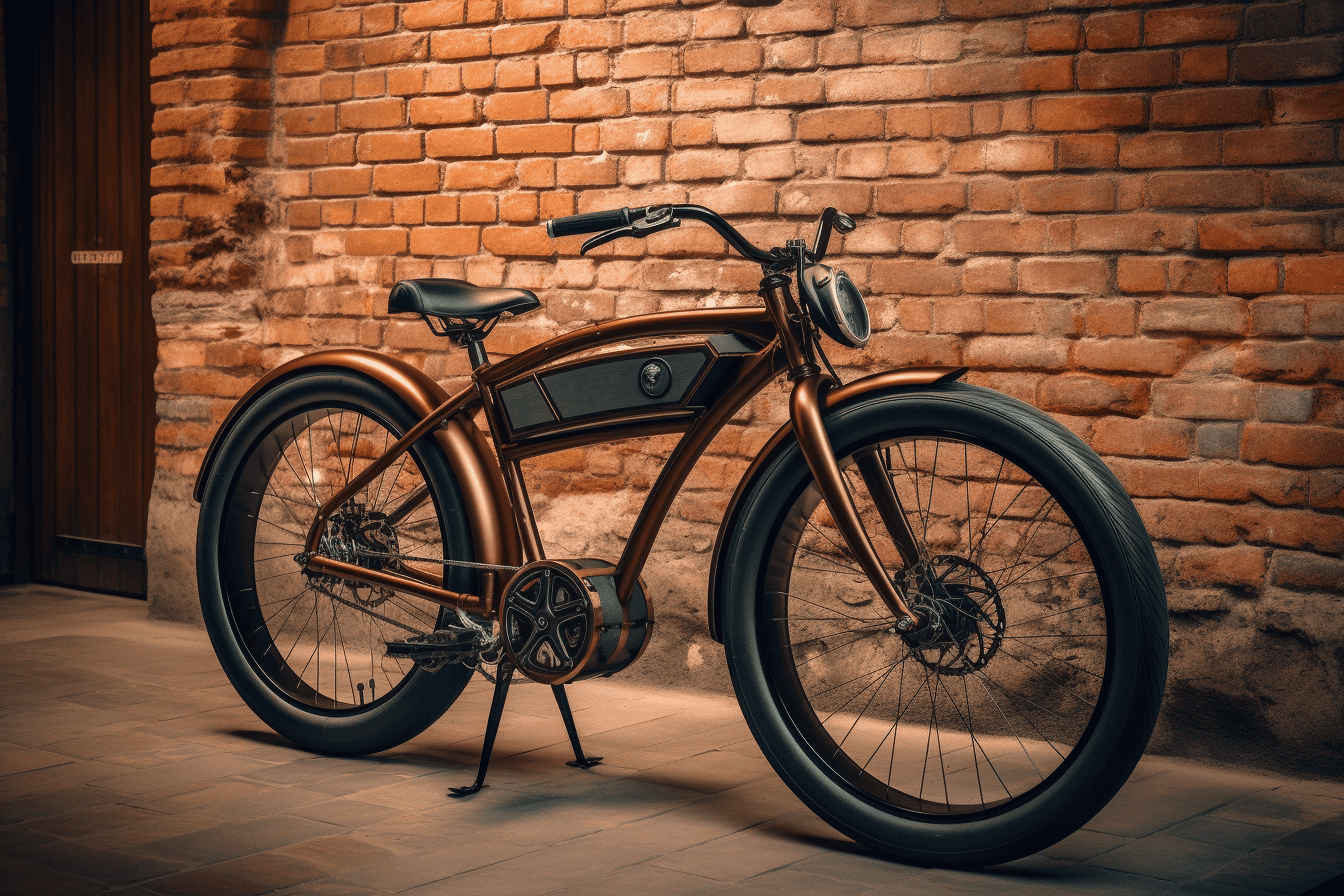
Hello all, I specialize in electric bike batteries, and I’m here to guide you through choosing the best batteries for your electric bicycle.
Electric bikes can be powered by various types of batteries, from lithium-ion to lead acid batteries. Each type has its benefits and drawbacks that should be considered when selecting the right one for your needs.
In this article, I’ll go over the advantages and disadvantages of each type so you can make an informed decision about which is the best choice for you.
Overview Of Electric Bike Batteries
Electric bike batteries are truly a marvel of modern technology. They allow us to travel long distances on renewable energy, with minimal effort and zero emissions! But what type of battery powers these miraculous machines?
The answer is complex but fascinating – electric bikes use many different types of batteries, all designed to provide maximum efficiency and longevity.

The most common type of battery used in electric bikes is the lithium-ion (Li-ion) battery. Li-ion batteries offer an impressive range compared to other types, allowing riders to go farther without needing frequent charging stops. Additionally, they are lightweight and easy to maintain, making them ideal for commuting or recreational riding.
It’s important that we practice proper recycling when disposing of our old electric bike batteries; however, most companies have taken steps to ensure that their products can be recycled safely and easily at end of life. This helps reduce wastefulness while promoting sustainability – a win-win situation for everyone involved!
Lithium Ion Batteries
As an electric bike battery expert, I can confidently say that lithium ion batteries are the best type of battery for electric bikes. Their capacity is unmatched when compared to other types of batteries, and their weight makes them a great option for lightening up your ride.
With a higher energy density than lead acid or nickel-cadmium, you’ll get more out of your investment with a lithium ion battery. Many riders find that they don’t need to replace their lithium ion batteries as often as others because of how long-lasting these rechargeable powerhouses are.
The biggest benefit to using lithium ion batteries on electric bikes is the amount of range they provide without adding much weight. You can go farther on one charge while keeping your overall bike weight down so you won’t have any trouble getting around town quickly.
They also last longer than other batteries – some models boast thousands of cycles before needing replacement. This means fewer trips to the store for new batteries and more time spent enjoying your ride!
When choosing an electric bike battery, consider both its capacity and weight in order to make sure it’s right for you. Lithium ion batteries offer superior performance with minimal additional burden on the rider – making them ideal for those who want maximum efficiency from their ebikes.
Lead Acid Batteries
Lead acid batteries are one of the most popular battery types used in electric bikes due to their affordability and reliability. The lead-acid cells contain a liquid electrolyte made up of sulfuric acid and water, while the positive plates consist of lead dioxide and the negative plates consist of sponge lead. Lead-acid batteries have an average lifespan between 300-500 charging cycles and require regular maintenance for optimum performance.
The biggest advantage of using lead acid batteries is that they can be recharged relatively quickly compared to other types of rechargeable batteries. In addition, these batteries also offer excellent resistance against extreme temperature fluctuations, making them ideal for outdoor use.
However, despite their many benefits, there are some drawbacks associated with this type of battery such as its heavy weight and limited capacity. When it comes to choosing a battery for your electric bike, you should consider all aspects including cost, performance, durability and safety before making your decision.
Lead acid batteries provide reliable power at an affordable price which makes them a great option for anyone looking to get more out of their electric bike experience.
Moving on from lead acid batteries we come to nickel cadmium (NiCd) batteries – another popular choice for electric bikes.
Nickel Cadmium Batteries
I’m an electric bike battery expert, and I’m here to talk about Nickel Cadmium Batteries.
They have their advantages – they’re lightweight, have a long shelf life, and are relatively inexpensive.
But, there are also some disadvantages to consider – they have a limited rechargeability and can be hazardous to the environment if not handled properly.
Additionally, they have a memory effect, which can reduce their overall charge capacity over time.
Rechargeability is an important factor when it comes to Nickel Cadmium Batteries, and they can typically be recharged up to 1000 times before needing to be replaced.
All in all, they’re a good option for electric bike batteries, but it’s important to be aware of their pros and cons.
Advantages
When it comes to electric bikes, the right battery choice can make all the difference. Nickel Cadmium batteries provide a number of advantages that other types simply cannot match.
With their efficiency savings and environmental impacts, they are an ideal pick for any bike-rider who wants to get the most out of their ride! For starters, Nickel Cadmium batteries offer unbeatable energy density at around 40 Wh/kg — meaning you’ll be able to travel further on less weight than with other models.
This not only makes your riding experience more enjoyable thanks to lighter overall load, but also keeps costs down since you won’t have to pay as much for heavier cells. And because these batteries are rechargeable up to 500 times or more depending on usage, you can rest assured that your investment will last for years without needing replacement or costly repairs.
Perhaps best of all is that Nickel Cadmium batteries have no memory effect; so even if you don’t fully drain them before recharging, there’s little impact on performance over time. As such, charging becomes far easier — plus you’re helping reduce environmental waste too by avoiding single-use cell disposal fees altogether!
All in all, Nickel Cadmium batteries help riders save money while enjoying a safe and reliable ride every time – now that’s worth celebrating!
Disadvantages
While Nickel Cadmium batteries provide plenty of advantages compared to other battery types, there are some drawbacks too.
For one thing, they’re not as reliable when it comes to charging efficiency — meaning you’ll need a good charger and regular maintenance in order to keep your cell performance at its peak.
Additionally, the longer charge times can be inconvenient if you’re looking for an immediate boost during your ride.
Lastly, their higher cost due to their popularity is something that many riders have had to factor into their budgeting plans.
However, these downsides don’t necessarily outweigh the positives; on the contrary, with proper care and attention, these cells remain a great choice for any electric bike enthusiast!
After all, with such outstanding energy density and rechargeable capabilities up to 500 times or more depending on usage – along with no memory effect – you can trust that your investment will last for years without needing replacement or expensive repairs.
So if you want both performance and reliability from your electric bike battery without breaking the bank, then Nickel Cadmium could be just what you’ve been looking for!
With careful use and maintenance over time, you’ll enjoy miles of smooth riding every time — now that’s worth celebrating indeed!
Rechargeability
When it comes to rechargeability, Nickel Cadmium batteries are hard to beat.
With a long charging duration of up to 8 hours or more depending on usage – and no memory effect – you don’t need to worry about regular maintenance or having your performance suffer due to frequent recharging.
This makes them an ideal option for any electric bike enthusiast looking for reliable power that won’t cost too much in the long run!
Plus, with their environmental impact being so low compared to other battery types, these cells can be used safely without causing harm to our planet’s fragile ecology.
So not only do you get a great riding experience each time but also peace of mind knowing your investment is making a positive difference in the world!
Nickel Metal Hydride Batteries
When it comes to electric bike batteries, Nickel Metal Hydride (NiMH) is one of the most popular options. With a high energy density and low self-discharge rate, NiMH batteries offer superior battery capacity for extended ride times with minimal maintenance required over time. Additionally, their chemistry makes them ideal for applications that require frequent use or deep discharges such as e-bikes.
Unlike lithium ion batteries which tend to degrade rapidly when subjected to heavy loads like hills or long distances, NiMH batteries are much more resilient and can handle these conditions better than other chemistries. This means you don’t have to worry about your battery dying on an important journey. Furthermore, they can be recharged quickly in between rides if necessary without damaging the battery cells.
The only downside to this type of battery is that it may not offer quite as much range as some other types such as lithium iron phosphate (LiFePO4), but its reliability and durability make up for any potential shortcomings here.
As I mentioned before, NiMH batteries are built to last and provide reliable performance even under demanding riding conditions. With proper care, they should serve you faithfully for many years of enjoyable rides ahead!
Moving onto LiFePO4 batteries then…
Lithium Iron Phosphate Batteries
When it comes to electric bike batteries, Lithium Iron Phosphate (LiFePO4) is the way to go. This type of battery has many advantages that make it ideal for powering an e-bike.
To start with, LiFePO4 batteries are incredibly lightweight and portable, making them perfect for a bicycle application. A typical pack weighs less than 6 pounds and can easily fit into a saddle bag or pannier.
Additionally, they hold their charge extremely well so you don’t have to worry about your bike going dead while out on a ride. The other great thing about LiFePO4 batteries is their long life cycle – up to 2000 charge cycles! That’s more than enough power to take you from season to season without needing replacement packs.
Plus, these types of cells offer excellent safety features which makes them much safer than traditional lead acid options. Finally, LiFePO4 batteries produce low levels of heat during charging and discharging – making them an efficient choice for powering any electric vehicle.
In summary: LiFePO4 batteries provide superior portability, battery weight and long life cycle benefits compared to other types available on the market today; plus added safety features and minimal heat generation when using them in an e-bike setting. With all these qualities combined, they’re definitely worth considering if you’re looking for reliable power delivery for your next cycling adventure.
Lifepo4 Batteries
LiFePO4 batteries are becoming increasingly popular in the electric bike industry due to their impressive charging efficiency and low environmental impact.
In fact, recent studies have shown that LiFePO4 batteries can provide up to 2000 full charge/discharge cycles before needing a replacement – that’s nearly twice as many charges than traditional lead-acid battery technologies! This makes them well suited for long commutes or extended off-road rides.
The advantages of LiFePO4 batteries don’t stop there either. They also offer superior energy density compared to other types of battery technology, meaning you’ll get more miles per charge from your ebike.
Furthermore, they’re much lighter than standard lead-acid options which could mean less strain on your frame when taking longer journeys or tackling steep climbs.
On top of their improved performance, these lithium iron phosphate cells help reduce overall carbon emissions since they produce little heat during charging and discharge processes.
Additionally, their recyclability helps make sure toxic materials are kept out of landfills while reducing costs associated with manufacturing new replacements.
Moving forward, it’s clear that LiFePO4 batteries will continue to be an important part of the electric bike market thanks to their numerous benefits over existing technologies.
With advancements in production techniques and better understandings of how the chemistry works, it’s likely we’ll see even more improvements down the line making these powerful cells a viable choice for any cyclist looking for maximum range and dependable power output from their ebike setup.
Zinc Air Batteries
Having discussed the advantages of LiFePO4 batteries for electric bikes, we now turn our attention to zinc air batteries. These are rechargeable and offer a number of benefits:
- They require no maintenance or monitoring, making them both easy and cost-effective to use.
- They offer superior waterproofing capabilities, allowing them to be used in more extreme conditions.
- Their portability makes them ideal for long trips since they can easily be carried along with you.
These features make zinc air batteries an excellent choice for those who want reliable power on their bike without having to worry about upkeep or carrying too much weight.
Plus, they provide superior performance compared to other types of batteries when it comes to cycling range and motor output.
With these qualities combined, it’s clear that zinc air is one of the best battery options available today – perfect for powering your electric bike adventures!
Alkaline Batteries
Did you know that one of the most popular types of batteries used in electric bikes are alkaline batteries?
Alkaline batteries have a wide range of alternative options for powering your bike, allowing riders to make battery comparisons to find the best fit for their needs.
One key benefit offered by alkaline batteries is a long shelf life – up to 10 years when properly stored at room temperature. Additionally, they offer great energy output and excellent depth of discharge compared to other battery types.
Whether you’re looking for an affordable option or something longer-lasting, alkaline batteries can provide just what you need.
Alkaline batteries also tend to be more reliable than other forms of power sources due to their higher capacity and ability to maintain consistent performance over time. This makes them ideal for those who want dependable power without having to worry about maintenance costs or frequent replacement cycles.
With so many benefits available, it’s no wonder why alkaline batteries are such a popular choice among electric bike owners!
Pros And Cons Of Different Batteries
When it comes to electric bike batteries, there are many rechargeable options available. Lithium-Ion and Lead Acid are the two most widely used types. Both have their advantages and disadvantages depending on your individual needs.
Lead acid batteries tend to be more affordable than lithium ion but offer a shorter lifespan and need frequent maintenance for optimal performance. They’re also quite heavy which can negatively impact riding experience. On the other hand, they do provide significant environmental benefits as lead acid is recyclable and doesn’t contain any hazardous materials that could potentially harm our planet if disposed of improperly like some lithium-ion batteries might.
At the end of the day, choosing between these two types really depends on what you need from your electric bike battery in terms of cost effectiveness, longevity, weight, power output and environmental impact. With all this information in mind, I’m sure you’ll make an informed decision about which type best suits you and your ebike!
It’s important to note though that no matter which type of battery you choose for your ebike, safety should always come first when handling or charging them. In order to ensure maximum protection while using your electric bike battery, let’s look at some essential safety tips…
Safety Tips For Electric Bike Batteries
As an electric bike battery expert, I’m sure you know how important it is to ensure the safety of your e-bike batteries. With a few simple steps and precautions, you can make sure that your electric bike’s battery will stay safe for years to come!
Here are some essential tips on charging and storage safety:
- Always charge your e-bike in a well ventilated area away from any flammable materials such as gasoline or paint.
- When storing your e-bike, be sure to store the battery separately from other metal objects like keys or coins. This prevents corrosion due to contact with these metals.
- Ensure that all connections between the charger and battery are secure before leaving it alone while charging. Also keep in mind that most chargers require ventilation when being used so avoid placing them near combustible items or surfaces.
These basic tips can help protect against potential hazards posed by improper use of electric bike batteries, but there’s still more to learn about safely using this type of power source – which brings us nicely into our next topic – charging and maintenance…
Charging And Maintenance
As an electric bike battery expert, it’s important to understand the various charging and maintenance practices associated with keeping your e-bike running at peak performance. Keeping up on these processes is crucial for ensuring a long lifespan of your battery. In order to maximize efficiency and longevity, I recommend following some simple guidelines when it comes to charging cycles and maintenance.
One key aspect of proper care for your e-bike battery is understanding the charge cycle. Ideally you should only allow your battery to reach around 80 percent capacity before recharging again; this helps ensure that each charging session has maximum effect without overworking the cells within the battery pack. This also allows for more consistent use of your e-bike as well as extending its overall lifetime. Additionally, reducing frequency of full discharges will help increase the life expectancy of your battery significantly.
Finally, regular maintenance can take many forms depending on how often you ride and if you keep track of usage patterns or any concerning signs from your bike’s components. It’s best practice to store in optimal conditions such as room temperature away from direct sunlight or extreme cold temperatures which may cause damage to the internals of the pack.
Regularly inspecting cables and connectors for corrosion along with checking fluids levels like coolant are all necessary steps toward maintaining a healthy electric bike system. With these tips in mind, you’re sure to get great mileage out of every charge! Moving forward, let’s discuss what effects battery life expectancy so we can better understand its total lifespan potential.
Battery Life Expectancy
Have you ever wondered what type of batteries power electric bikes? Electric bike batteries come in various types, shapes and sizes.
Lithium-ion (Li-ion) is the most commonly used battery for electric bikes due to its long life expectancy, light weight and fast charging capabilities. Battery testing and charging methods are important considerations when deciding which type of Li-ion battery will best suit your needs.
Lead acid batteries were the original go-to option for electric bicycle owners in the early days of e-bikes but have been largely replaced with lighter and more efficient lithium ion models as technology has advanced over time. Lead Acid Batteries are still an available option, although they tend to be heavier than their Li-ion counterparts while providing a shorter range per charge cycle – making them less practical for daily use.
NiMH batteries are slowly becoming obsolete as newer technologies such as LiFePO4 become more commonplace. NiMH generally offer greater energy density than lead acid units but suffer from similar drawbacks related to weight, lifespan and overall cost – meaning that many cyclists opt for alternative sources of power instead.
To ensure maximum efficiency and longevity out of any battery source it is crucial that riders understand how to properly maintain their system through regular cleaning, maintenance checks and correct charging methods.
As we move forward into this new age of sustainable transportation, determining the right type of battery can make all the difference between enjoying a smooth ride or having a breakdown!
Cost Differences Between Batteries
When it comes to electric bikes, the type of battery you choose can make a big difference in cost. Generally speaking, lithium-ion batteries tend to be more expensive than lead acid or nickel cadmium batteries. However, there are some important considerations when making a cost comparison between different types of batteries.
For instance, while lithium-ion batteries may have an initial higher price tag, they also last longer and require less maintenance over time. This means that their overall cost is often lower than other types of batteries even though they may seem more expensive at first glance.
On the other hand, lead acid and nickel cadmium batteries need to be replaced more often and require additional upkeep which can increase their total cost in the long run.
In addition to considering each battery’s upfront cost, it’s important to look into its pricing structure as well. Does the battery come with a warranty? What kind of customer service is available for any issues that arise? Are there discounts available if purchasing multiple units? These are all factors that should be taken into account when comparing prices between different types of electric bike batteries.
Considering these points will help ensure that you get the best value for your money no matter which type of battery you choose for your electric bike. With this information in mind, let’s now move on to selecting the right battery for your needs.
Selecting The Right Battery For Your Electric Bike
When selecting the right battery for your electric bike, there are several factors to consider. Portability concerns as well as power output should be taken into account when making a decision.
Here is an expert checklist of four items to keep in mind when choosing the perfect electric bike battery:
- Battery Capacity – Make sure you have enough capacity so that you can go the distance without running out of juice too soon.
- Weight and Size – Consider how portable and easy to install your chosen battery needs to be.
- Recharging Time – Pick one that recharges quickly so you don’t have to wait long between rides.
- Power Output – Ensure that it provides sufficient power for both acceleration and hill climbing capabilities with ease.
To make the most informed choice possible, do some research on different batteries available in order to determine which type best fits your individual needs and preferences – this will help ensure you get the most value from your purchase!
Frequently Asked Questions
What Is The Best Battery To Use For A Long-Distance Ride?
If you’re looking for a battery that will keep your electric bike going the distance, then look no further!
I’m an expert on electric bike batteries and my advice is to go for one with a high capacity and short charging times. With this type of battery, you’ll be able to ride miles down the road without having to worry about running out of juice or waiting hours before being able to go again.
The key to success here is finding the right balance between capacity and charging time – it’s all about making sure you get enough power but also don’t have to wait too long before hitting the open roads once more!
What Type Of Battery Should Be Used If I’m Looking For Maximum Power?
If you’re looking for maximum power, then the best battery to use is a lithium-ion battery.
Lithium-ion batteries are known for their high energy density and charging time, so they can provide ample power for long rides.
Additionally, compared to other types of batteries such as lead-acid or nickel metal hydride, lithium ion batteries last longer with higher charge cycles and better performance overall.
So when it comes to electric bikes, using a lithium-ion battery is definitely the way to go if you want maximum power!
How Do I Know When My Electric Bike Battery Needs To Be Replaced?
Understanding when your electric bike battery needs to be replaced is essential for maintaining the longevity of your ride. As an expert, I highly recommend that you become familiar with both the charging habits and performance indicators of your battery.
Generally speaking, if your battery no longer holds a charge as it did before, or takes significantly longer to charge than usual, then it’s likely time for a replacement.
Additionally, if you notice any signs of corrosion on the terminals or any other parts of the battery, this could also indicate that it should be replaced soon.
How Do I Safely Dispose Of An Electric Bike Battery?
As an electric bike battery expert, I want to ensure you’re safely disposing of your old battery.
Charging tips and eco-friendly disposal are key when it comes to replacing or upgrading your electric bike battery.
It’s important that you take the time to research the best ways to dispose of a used battery in order to maintain environmental safety.
You can contact your local recycling center for more information on how to properly recycle an electric bike battery, as well as explore other methods such as donating or selling it for use elsewhere.
Ultimately, taking care of these batteries is critical for protecting our environment!
What Is The Difference Between Lead Acid And Lithium Ion Batteries?
Lead acid and lithium ion batteries are both widely used in electric bikes.
While they have similar functionality, their differences lie primarily in their battery capacity and charging time.
Lead-acid batteries typically have a larger capacity than lithium-ion batteries, however they take longer to charge.
On the other hand, lithium-ion batteries usually take less time to charge but tend to have smaller capacities; this is often offset by being able to recharge more times before needing replacement.
Ultimately, when it comes to choosing between the two types of batteries for your electric bike, it’s important to consider how much you plan on using your bike, as well as how much weight you want it to carry.
Conclusion
Electric bike batteries come in a variety of shapes and sizes, all with different performance characteristics. When it comes to choosing the best battery for your needs, there is no one-size-fits-all solution.
However, understanding the differences between lead acid and lithium ion batteries can help you make an informed decision about which type is right for you.
Doing research beforehand will ensure that you purchase a quality battery that meets your electric bike’s power requirements while also providing reliable performance over time.
With the right information and guidance, you can select the perfect battery to get the most out of your electric biking experience! So ask yourself: what type of battery do I need to power my ride?
Olivia’s writing is not only informative but also inspiring. She has a knack for telling stories that capture the essence of cycling and the joy it brings to people’s lives. Her writing has been praised by readers and industry experts alike for its clarity, depth, and authenticity.
In addition to her writing, Olivia is also an avid cyclist. She enjoys exploring new trails and routes and has participated in several cycling events and races. Her first-hand experience with cycling gives her a unique perspective on the sport, reflected in her writing.
Overall, Olivia is a talented writer passionate about cycling and dedicated to producing high-quality content for FlatironBike. Her contributions to the magazine have helped make it a go-to source for cycling enthusiasts worldwide.
Electric Bike
Where Can I Sell My Used Electric Bike

Thinking about selling your cherished electric bike but questioning ‘where can I sell my used electric bike?’ Don’t fret! I have numerous options available for you.
From popular online marketplaces like eBay and Craigslist to specialized electric bike platforms such as Pedego Marketplace, there are plenty of avenues to explore.
Whether it’s reaching out to local bike shops or tapping into social media groups, finding a new home for your trusty two-wheeler has never been easier!
Let’s dive into the world of selling used electric bikes together, shall we?
Key Takeaways
- Contact electric bike rental companies, friends, family, and colleagues to reach potential buyers
- Consider donating the bike to local charities or non-profit organizations to give back to the community and promote sustainability
- Utilize online platforms and create a detailed listing with high-quality photos for selling the bike
- Visit local bike shops and negotiate a fair price, providing information about the bike’s specifications and condition
Online marketplaces such as eBay, Craigslist, and Facebook Marketplace
You can sell your used electric bike on online marketplaces like eBay, Craigslist, and Facebook Marketplace. These platforms provide a wide reach and attract a large number of potential buyers.
Listing your bike is easy, and you can include detailed descriptions, photos, and even negotiate prices with interested parties. eBay offers a bidding system, allowing you to potentially get a higher price for your bike. Craigslist allows you to sell locally, eliminating the need for shipping. Facebook Marketplace is great for selling within your community and connecting with nearby buyers.
Once you’ve explored these online options, you can also consider local classified ads in newspapers or community bulletin boards, expanding your reach and finding potential buyers in your area.
Local classified ads in newspapers or community bulletin boards
Check out local classified ads or community bulletin boards for a great spot to list your pre-owned e-bike. These traditional methods of advertising still have a strong presence in many communities, and they can be a reliable way to reach potential buyers who may not be actively searching online.
By placing an ad in the classified section of a newspaper or on a community bulletin board, you can attract local buyers who are specifically looking for used electric bikes.
Once you’ve explored these options, it’s time to expand your reach and consider dedicated electric bike marketplaces like Pedego Marketplace or E-Lux Electric Bikes. These platforms focus specifically on e-bikes, allowing you to target a niche market of buyers who are already interested in this type of transportation.
Transition seamlessly into the subsequent section by exploring these specialized marketplaces for even more selling opportunities.
Dedicated electric bike marketplaces like Pedego Marketplace or E-Lux Electric Bikes
Once you’ve explored local classified ads and community bulletin boards, it’s time to consider dedicated e-bike marketplaces like Pedego Marketplace or E-Lux Electric Bikes. These platforms offer a focused and targeted audience of electric bike enthusiasts who are specifically looking to buy or sell electric bikes.
Here are four reasons why dedicated e-bike marketplaces can be a great option for selling your used electric bike:
-
Targeted Audience: These marketplaces attract people who are specifically interested in electric bikes, increasing your chances of finding a buyer quickly.
-
Trust and Credibility: Established marketplaces like Pedego and E-Lux have built a reputation for quality and reliability, giving potential buyers confidence in purchasing from you.
-
Easier Listing Process: These marketplaces often have user-friendly interfaces that make it simple to create an attractive listing for your bike.
-
Access to Support: If you have any questions or need assistance during the selling process, dedicated e-bike marketplaces usually have dedicated support teams to help you.
Now, let’s dive into the next section about online forums and social media groups for electric bike enthusiasts.
Online forums and social media groups for electric bike enthusiasts
Joining online forums and social media groups for e-bike enthusiasts can provide valuable connections and information about the electric bike community. These platforms allow you to connect with fellow electric bike owners, share your experiences, and ask questions. Additionally, you can find potential buyers for your used electric bike by posting in these groups. You can also gain insights on the market value of your bike and negotiate a fair price. To further enhance your selling experience, consider using a table to list the specifications and features of your electric bike. This can help potential buyers quickly identify if your bike meets their requirements. However, if you prefer a more personalized approach, the next step is to explore local bike shops or specialty electric bike stores where you can sell your used electric bike.
Local bike shops or specialty electric bike stores
You can try visiting local bike shops or specialty electric bike stores to explore potential options for selling your pre-owned e-bike. Here are some reasons why this could be a good option:
-
Knowledgeable staff: Bike shop employees are often well-versed in electric bikes and can provide valuable insights and advice.
-
Targeted audience: These shops attract customers who are specifically interested in electric bikes, increasing your chances of finding a buyer.
-
Trade-in opportunities: Some shops offer trade-in programs, allowing you to exchange your old bike for a new one or receive store credit.
-
Consignment options: Certain stores may offer consignment services, where they sell your bike on your behalf for a commission.
-
Local convenience: Selling your bike locally means you can easily transport it to the shop and potentially avoid shipping fees.
Consider exploring consignment shops or second-hand stores that accept bikes as another avenue for selling your e-bike.
Consignment shops or second-hand stores that accept bikes
Consider researching consignment shops or second-hand stores in your area that accept pre-owned bicycles, as they may be interested in purchasing your e-bike. These types of shops often have a dedicated customer base looking for affordable, used bikes, and they may be willing to pay a fair price for your electric bike.
When visiting these shops, be sure to bring your e-bike along with any relevant documentation, such as proof of purchase or maintenance records, to showcase its value and condition.
If you’re unable to find a consignment shop or second-hand store that suits your needs, don’t worry. There are other options available for selling your used electric bike.
Consider hosting a garage sale or participating in a community bike swap event. These events can attract potential buyers who are specifically interested in bicycles, making it more likely that you’ll find someone interested in purchasing your e-bike.
By exploring these different avenues, you increase your chances of finding a buyer for your used electric bike and getting a fair price for it.
Hosting a garage sale or participating in a community bike swap event
I’ve been exploring different options for selling my used electric bike. One idea that caught my attention was hosting a garage sale or participating in a community bike swap event. These events provide a great opportunity to connect with local bike enthusiasts and potential buyers. Plus, it’s a fun way to engage with my community and showcase my bike to a wider audience.
If you’re considering this route, here are three advantages of hosting a garage sale or participating in a community bike swap event:
- Exposure: These events attract a diverse crowd, giving your bike more visibility.
- Networking: You can connect with other bike enthusiasts and potentially find interested buyers.
- Convenience: It’s a straightforward way to sell your bike without the hassle of listing it online or dealing with consignment shops.
Now, I’m excited to explore another avenue for selling my used electric bike: contacting electric bike rental companies to see if they are interested in purchasing used bikes.
Contacting electric bike rental companies to see if they are interested in purchasing used bikes
Contacting electric bike rental companies to see if they’re interested in purchasing pre-owned bikes can be a smart strategy for finding a buyer. These companies often have a customer base that is already interested in electric bikes, making them more likely to be interested in purchasing used ones. Additionally, they may be looking to expand their inventory or offer a rental option for customers who prefer to try before they buy. To make the process easier, I have created a table below to help you keep track of the rental companies you have contacted and their responses:
| Electric Bike Rental Company | Contacted | Response |
|---|---|---|
| ABC Rentals | Yes | Interested! Could you provide more information? |
| XYZ Bike Adventures | No | Not interested at the moment. |
After reaching out to electric bike rental companies, the next step is to consider reaching out to friends, family, and colleagues who may be interested in buying your electric bike.
Reaching out to friends, family, and colleagues who may be interested in buying your electric bike
Reaching out to friends, family, and colleagues who might be interested in purchasing an e-bike can be a great way to find a potential buyer. I’ve found that people within my personal network are often more willing to consider buying a used electric bike because they trust me and know that I’ve taken good care of it.
I’ve started by sending out a message to my close friends and family, letting them know that I’m selling my e-bike and asking if they or anyone they know might be interested. Additionally, I’ve mentioned it casually in conversations with colleagues, just to see if anyone shows interest.
By tapping into my personal connections, I hope to find someone who will appreciate the value of my electric bike.
Speaking of finding potential buyers, another option to consider is donating your used electric bike to a local charity or non-profit organization.
Donating your used electric bike to a local charity or non-profit organization
After considering reaching out to friends, family, and colleagues who may be interested in buying my electric bike, I also thought about donating it to a local charity or non-profit organization. This way, I can give back to my community while finding a new home for my beloved bike.
Donating the electric bike has several advantages:
-
Supporting a good cause: By donating to a local charity or non-profit, I can contribute to their mission and help those in need.
-
Tax benefits: In some cases, donating a used electric bike can lead to tax deductions, which can be a nice bonus.
-
Environmental impact: By donating, I can promote sustainability and reduce waste by giving the bike a second life.
-
Making a difference: Someone who couldn’t afford a new electric bike might be able to enjoy the benefits of cycling with the one I donate.
Overall, donating my used electric bike seems like a great option to consider.
Frequently Asked Questions
How do I determine the value of my used electric bike before selling it?
To determine the value of my used electric bike before selling it, I would consider factors like its age, condition, brand, and market demand. I can also research similar listings to get an idea of the average selling price.
Are there any specific requirements or guidelines for selling an electric bike on online marketplaces like eBay or Craigslist?
When selling an electric bike on platforms like eBay or Craigslist, it’s important to follow their specific guidelines and requirements. This ensures a smooth selling process and helps attract potential buyers.
What are the advantages of selling my used electric bike through dedicated electric bike marketplaces like Pedego Marketplace or E-Lux Electric Bikes?
The advantages of selling my used electric bike through dedicated electric bike marketplaces like pedego marketplace or e-lux electric bikes include reaching a targeted audience of electric bike enthusiasts and potentially getting a higher price for my bike.
How can I ensure a safe and secure transaction when selling my used electric bike through online forums or social media groups?
To ensure a safe and secure transaction when selling my used electric bike through online forums or social media groups, I can follow these steps: thoroughly research the buyer, use a secure payment method, and meet in a public place.
Are there any legal considerations or regulations I need to be aware of when selling my used electric bike through local bike shops or specialty electric bike stores?
When selling my used electric bike through local bike shops or specialty electric bike stores, it’s important to be aware of any legal considerations or regulations that may apply to the sale.
Conclusion
Selling my used electric bike has been quite a quest!
From perusing online marketplaces like eBay and Facebook Marketplace, to exploring electric bike marketplaces like Pedego Marketplace, I’ve embarked on an exciting journey.
Don’t forget local classified ads, social media groups, and contacting electric bike rental companies.
But the pinnacle of possibility lies in reaching out to friends, family, and colleagues.
And if all else fails, I can always donate my trusty two-wheeled companion to a charitable cause.
Selling my sensational, second-hand electric bike has been a satisfying and stimulating saga!
Electric Bike
What Is The Fastest Electric Bike In The World
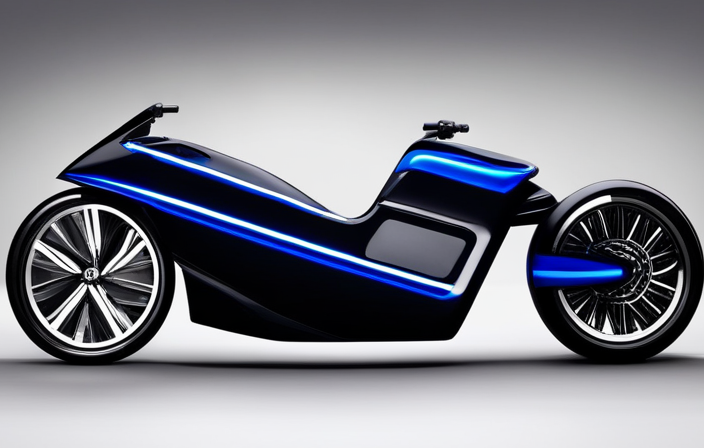
Ladies and gentlemen, grab your helmets tight because I’m going to present to you the world’s quickest electric bike!
This two-wheeled beast is a thrilling combination of speed and power, designed to push the boundaries of what we thought was possible.
With its cutting-edge technology and lightning-fast acceleration, this bike will leave you breathless and begging for more.
Get ready to experience the future of high-speed electric biking like never before.
Key Takeaways
- Rise of electric bikes as a popular choice for commuters and outdoor enthusiasts
- High-speed electric bikes offering thrilling speeds comparable to traditional motorcycles
- Introduction to the top contender in electric bikes with impressive features and specifications
- Features and specifications of the fastest electric bike, including top speed, range, motor power, and safety features
The Rise of Electric Bikes
The rise of electric bikes has led to a surge in popularity among commuters and outdoor enthusiasts alike. As a cyclist myself, I have witnessed this transformation firsthand.
Electric bikes provide a unique combination of convenience and sustainability, making them an attractive option for those looking to reduce their carbon footprint while enjoying the great outdoors. With advancements in technology, electric bikes have become faster, sleeker, and more powerful than ever before. Riders can now effortlessly reach higher speeds and cover greater distances with ease.
This has sparked a newfound interest in exploring the limits of electric bike speed. In the next section, we will delve into the need for speed and explore the world of high-speed electric bikes. It’s fascinating to see how far this industry has come and the exciting possibilities that lie ahead.
The Need for Speed: Exploring High-Speed Electric Bikes
Explore the need for speed by discovering high-speed electric bikes. These cutting-edge machines are revolutionizing the way we ride, offering thrilling speeds that rival traditional motorcycles. With their powerful motors and advanced battery technology, high-speed electric bikes have become a favorite among adrenaline junkies and thrill-seekers alike.
To truly understand the excitement these bikes bring, let’s take a look at the emotions they evoke:
| Emotion | Description | Example |
|---|---|---|
| Thrill | Heart-pounding | Racing down a hill |
| Freedom | Unleashing power | Accelerating swiftly |
| Excitement | Adrenaline rush | Passing competitors |
| Fearlessness | Conquering limits | Taking sharp turns |
These emotions are just the tip of the iceberg when it comes to high-speed electric bikes. They push boundaries and redefine what’s possible on two wheels. With that in mind, let’s introduce the top contender in the quest for the fastest electric bike in the world.
Introducing the Top Contender
Now, let’s dive into the top contender for the title of the fastest electric bike in the world.
This impressive machine boasts a range of incredible features and specifications that set it apart from the competition.
Not only that, but it has also garnered rave reviews from both riders and experts, making it a force to be reckoned with in the world of high-speed electric bikes.
Features and Specifications of the Fastest Electric Bike
Featuring powerful specifications, the fastest electric bike offers an exhilarating ride. With a top speed of 60 miles per hour and a range of 120 miles on a single charge, this electric bike is truly a game-changer.
Its high-performance motor delivers an impressive 10,000 watts of power, allowing riders to zoom through city streets and conquer steep hills with ease. The bike’s lightweight carbon fiber frame and advanced suspension system ensure a smooth and comfortable ride, even at high speeds. Additionally, it comes equipped with advanced safety features such as hydraulic disc brakes and LED headlights for enhanced visibility.
Riders and experts alike have praised the bike’s lightning-fast acceleration and handling capabilities, making it a top choice for thrill-seekers and commuting enthusiasts alike. Transitioning into testimonials from riders and experts, it’s clear that this electric bike is revolutionizing the way we think about eco-friendly transportation.
Testimonials from Riders and Experts
Take it from riders and experts who have experienced it firsthand – this game-changing machine has left them completely awestruck.
The testimonials pour in, praising the incredible speed and power of the fastest electric bike in the world. Riders talk about the exhilarating feeling of effortlessly gliding through the streets, leaving everyone else in their dust.
Experts marvel at the engineering and design that has made this bike a true marvel of technology. They rave about the smooth ride, the precise handling, and the sheer joy it brings to anyone who hops on.
With each testimonial, it becomes clear that this bike is not just another electric bike – it is a game-changer. And now, let’s dive into the thrill of riding the fastest electric bike, where speed becomes an addiction.
The Thrill of Riding the Fastest Electric Bike
Experience the exhilaration of riding the fastest electric bike in the world.
As I hop on the saddle, a surge of excitement courses through my veins. The powerful electric motor propels me forward, effortlessly gliding through the streets. The wind whips against my face as I zoom past astonished onlookers.
It’s an adrenaline rush like no other, the feeling of pure speed and freedom. With each twist of the throttle, I push the boundaries of what I thought was possible on a bike. But as the speedometer climbs, so does the anticipation of the challenges and risks that lie ahead.
Pushing the limits is not without its dangers, and I know that I must be prepared for whatever obstacles come my way. But for now, I’ll revel in the sheer thrill of riding the fastest electric bike in the world.
Pushing the Limits: Challenges and Risks
As I push the boundaries on this high-speed ride, I must confront the challenges and risks that come with it.
The thrill of riding the fastest electric bike is exhilarating, but it also requires a great deal of skill and caution. The speed at which I fly down the road is both exciting and dangerous. I have to constantly be aware of my surroundings, anticipating any obstacles that may come my way.
The risk of accidents is always present, and I must be prepared for the possibility of injury. However, these challenges and risks only fuel my determination to continue pushing the limits. With each ride, I learn more about the capabilities of electric bikes and how to navigate them safely.
As I look to the future of high-speed electric biking, I am excited to see what new advancements and innovations will be made to enhance both the speed and safety of these incredible machines.
The Future of High-Speed Electric Biking
As I mentioned before, pushing the limits of high-speed electric biking comes with its fair share of challenges and risks. However, these challenges are only fueling the innovation and development of the next generation of electric bikes. That’s why I’m excited to discuss the future of high-speed electric biking.
Here are four key aspects that will shape the future of this thrilling sport:
-
Improved battery technology: Advancements in battery technology will allow for longer rides and faster speeds.
-
Enhanced aerodynamics: Designers are working on sleeker and more aerodynamic frames to reduce drag and increase efficiency.
-
Intelligent power management: Smart systems will optimize the motor’s power delivery, ensuring maximum performance and efficiency.
-
Advanced safety features: Future electric bikes will be equipped with advanced safety features like collision detection and emergency braking systems.
With these exciting developments on the horizon, it won’t be long before we witness the fastest electric bike in the world.
Frequently Asked Questions
What is the average cost of the fastest electric bike in the world?
The average cost of the fastest electric bike in the world can vary depending on the brand and model. Factors like advanced technology, high-quality components, and performance capabilities often contribute to a higher price range.
How long does it take to fully charge the fastest electric bike?
Charging the fastest electric bike is surprisingly quick! It takes just a few hours to fully charge, allowing me to get back on the road and experience the thrill of riding in no time.
Are there any legal restrictions or regulations for riding high-speed electric bikes?
Yes, there are legal restrictions and regulations for riding high-speed electric bikes. These vary by country and region, but commonly include age restrictions, speed limits, and requirements for safety equipment such as helmets and lights.
Can the fastest electric bike be used for off-road purposes?
Yes, the fastest electric bike can be used for off-road purposes. With its powerful motor and sturdy design, it can conquer any terrain. But first, let’s find out what the fastest electric bike in the world is.
What is the warranty coverage for the top contender in case of any mechanical issues?
The warranty coverage for the top contender includes protection against mechanical issues. It ensures that any problems will be fixed without additional cost.
Conclusion
In conclusion, riding the fastest electric bike in the world is an exhilarating experience that pushes the boundaries of speed and technology. With its sleek design and impressive performance, this top contender takes electric biking to a whole new level.
However, it is important to remember the challenges and risks that come with pushing the limits. As we look to the future, the evolution of high-speed electric biking continues, promising even more thrilling adventures to come.
So hop on, hold on tight, and let the speed take you to new heights!
Electric Bike
What Is The Point Of An Electric Bike

Searching for a quicker, more effective, and environmentally friendly mode of travel? Welcome the electric bicycle – the epitome of pedal-driven transit excellence!
With increased speed and accessibility for all fitness levels, electric bikes offer a fun and enjoyable riding experience.
But that’s not all! They also save you money on commuting expenses, reduce physical strain, and contribute to sustainable transportation solutions.
So, hop on and discover the electrifying benefits of an electric bike.
Key Takeaways
- Electric bikes provide a thrilling and enjoyable riding experience, adding excitement and an extra element of adventure to every journey.
- They contribute to sustainable transportation solutions by producing zero emissions, reducing air pollution, and decreasing traffic congestion and noise pollution.
- Electric bikes offer a practical and eco-friendly alternative to traditional vehicles, making a positive impact on the environment and creating a greener future.
- Riding an electric bike has numerous benefits and conveniences, such as effortless conquering of hills and long distances, optional workout through pedaling, and hassle-free commuting with no parking or traffic worries.
Increased Speed and Efficiency
The point of an electric bike is that it allows for increased speed and efficiency. With the help of a battery-powered motor, you can easily reach higher speeds and cover greater distances in less time. This is especially beneficial for those who commute to work or run errands around town.
Instead of relying solely on pedal power, you can use the electric assist to effortlessly glide along the roads. Not only does this save you time, but it also reduces the amount of effort required, making it a more enjoyable and convenient mode of transportation.
Speaking of convenience, electric bikes also offer accessibility for all fitness levels, allowing people of varying abilities to enjoy the benefits of cycling.
Accessibility for All Fitness Levels
Accessibility for all fitness levels is one of the main reasons people opt for an e-bike. With an electric bike, anyone can enjoy the benefits of cycling without worrying about their physical fitness level. Here are some reasons why e-bikes are accessible to all:
-
Assistive Technology: Electric bikes come equipped with a motor that provides assistance while pedaling, making it easier to ride for those with limited strength or mobility.
-
Adjustable Power Levels: E-bikes allow riders to choose different power levels, so they can customize the amount of assistance they receive based on their fitness level or desired intensity.
-
Reduced Physical Strain: The motorized assistance of an e-bike reduces the strain on joints and muscles, making it a suitable option for individuals recovering from injuries or with chronic conditions.
-
Inclusive Commuting: Electric bikes enable people of all fitness levels to commute longer distances or navigate hilly terrains, making cycling a viable transportation option for everyone.
Considering the accessibility benefits, it’s clear that e-bikes are not only an eco-friendly transportation option but also a versatile choice for people of all fitness levels.
Eco-Friendly Transportation Option
Looking for a green way to get around? An e-bike is a fantastic option for eco-friendly transportation. With zero emissions and the ability to be charged using renewable energy sources, electric bikes offer a sustainable mode of transportation that helps reduce our carbon footprint.
By choosing an e-bike over a traditional car or even a regular bicycle, you can contribute to a cleaner and healthier environment. Plus, using an electric bike is not only good for the planet, but also for your wallet. You can save a significant amount of money on commuting expenses, such as fuel costs and parking fees.
So, hop on an e-bike and start enjoying the benefits of eco-friendly transportation while saving some extra cash for other things you love.
Cost Savings on Commuting Expenses
By choosing an e-bike over other modes of transportation, you can save a significant amount of money on commuting expenses. With rising fuel costs and parking fees, the financial benefits of an electric bike are hard to ignore. Not only do electric bikes require less maintenance compared to cars, but they also eliminate the need for costly fuel. Additionally, e-bikes are exempt from road taxes and congestion charges in some areas, further reducing your expenses.
Furthermore, opting for an electric bike means you can say goodbye to expensive parking fees. Instead, you can park your e-bike for free or at a significantly lower cost. By saving money on commuting expenses, you can allocate those funds towards other essential needs.
This cost-saving advantage is just one of the many benefits of owning an electric bike, which will be discussed further in the subsequent section about reduced physical strain and fatigue.
Reduced Physical Strain and Fatigue
Choose an e-bike for your commute and experience less physical strain and fatigue. With an electric bike, you can effortlessly conquer hills and headwinds, reducing the physical effort required to pedal. This means you arrive at your destination feeling less tired and more energized for the day ahead. Plus, the electric assist allows you to maintain a consistent pace without overexerting yourself, making your ride more comfortable and enjoyable.
To further enhance your experience, consider these tips:
- Take advantage of the pedal-assist feature to effortlessly cruise through traffic and arrive at your destination quicker.
- Enjoy the freedom to choose your level of exertion by adjusting the electric assistance level to match your desired effort.
By reducing physical strain and fatigue, e-bikes provide a more enjoyable and comfortable commuting experience. And with extended range and battery life, you can go even further without worrying about running out of power.
Extended Range and Battery Life
After considering the reduced physical strain and fatigue that an electric bike offers, let’s now explore another advantage: extended range and battery life. With an electric bike, I can cover longer distances without worrying about running out of energy. It’s incredibly convenient, especially when I want to explore new areas or take longer rides. Plus, the extended battery life means I can spend more time enjoying the ride and less time worrying about recharging. To give you a clearer picture, here’s a table depicting the range and battery life of an average electric bike:
| Speed (mph) | Range (miles) | Battery Life (hours) |
|---|---|---|
| 15 | 30 | 4 |
| 20 | 40 | 5 |
| 25 | 50 | 6 |
| 30 | 60 | 7 |
| 35 | 70 | 8 |
With the extended range and battery life of an electric bike, I can confidently embark on longer journeys and explore new horizons. Speaking of exploration and physical well-being, let’s now delve into the health benefits of regular exercise.
Health Benefits of Regular Exercise
When you engage in regular exercise, you can experience a wide range of health benefits. Here are four reasons why regular exercise is important for your health:
-
Improved cardiovascular health: Regular exercise, such as cycling on an electric bike, can help strengthen your heart and improve its efficiency. This can lower your risk of developing heart disease and high blood pressure.
-
Weight management: Regular exercise helps burn calories, which can aid in weight loss or weight maintenance. Riding an electric bike can be a fun and effective way to incorporate physical activity into your daily routine.
-
Increased muscle strength and endurance: Cycling on an electric bike engages various muscle groups, such as your legs, core, and arms. This can help improve your overall muscle strength and endurance.
-
Reduced stress and improved mental health: Engaging in regular exercise, including riding an electric bike, can release endorphins, which are natural mood boosters. This can help reduce stress, anxiety, and symptoms of depression.
Regular exercise on an electric bike not only provides health benefits but also offers versatility for various terrains and commutes.
Versatility for Various Terrains and Commutes
Riding an e-bike offers the flexibility to navigate different types of terrain and commute routes. It’s amazing how these bikes can handle various conditions, making my daily rides more enjoyable and hassle-free. Whether I need to conquer a steep hill or maneuver through crowded city streets, my electric bike effortlessly adapts to the challenge. Check out the table below to see how an e-bike tackles different terrains:
| Terrain | E-Bike Performance |
|---|---|
| Hilly areas | Effortless ascent |
| Gravel paths | Smooth ride |
| Urban streets | Easy maneuvering |
| Off-road trails | Adventure-ready |
With an electric bike, I can easily tackle any terrain and have a comfortable, efficient commute. It’s the perfect way to make my daily rides more fun and enjoyable. Let’s dive into the next section to explore the other benefits of riding an e-bike!
Fun and Enjoyable Riding Experience
Experience the thrill of riding an e-bike and enjoy the fun it brings to your daily commutes.
Riding an electric bike is not just about getting from point A to point B; it’s about the exhilaration you feel as the wind rushes through your hair and the power of the motor propels you forward.
The smooth and effortless ride of an e-bike makes every journey a joyous adventure. Whether you’re cruising along city streets or exploring scenic trails, the electric assistance adds an extra element of excitement to your ride.
It’s like having your own personal boost of energy, allowing you to effortlessly conquer hills and long distances. And the best part? You can still pedal and get a workout if you want to.
So hop on an e-bike and experience the fun and freedom it offers.
With its contribution to sustainable transportation solutions, e-bikes are not only enjoyable, but they also help create a greener and more eco-friendly future.
Contribution to Sustainable Transportation Solutions
I’ve already talked about how electric bikes can provide a fun and enjoyable riding experience, but there’s another important aspect to consider: their contribution to sustainable transportation solutions.
Electric bikes are a great alternative to traditional vehicles because they are powered by electricity and produce zero emissions. This means that they have a much smaller carbon footprint compared to cars or motorcycles. By choosing to ride an electric bike instead of driving a car, I am actively making a positive impact on the environment.
Not only am I reducing air pollution, but I am also helping to decrease traffic congestion and noise pollution. Electric bikes offer a practical and eco-friendly solution to commuting, allowing me to get around in a way that is both convenient and sustainable.
Frequently Asked Questions
How do electric bikes contribute to sustainable transportation solutions?
Electric bikes contribute to sustainable transportation solutions by reducing reliance on fossil fuels and minimizing air pollution. They provide an eco-friendly alternative for short commutes, helping to alleviate traffic congestion and decrease carbon emissions.
Are there any health benefits associated with riding electric bikes regularly?
There are several health benefits associated with regularly riding electric bikes. They provide a low-impact form of exercise, help improve cardiovascular health, increase muscle strength, and can even assist in weight loss.
Can electric bikes be used on various terrains and commutes?
Yes, electric bikes can be used on various terrains and are great for commutes. They offer the flexibility to tackle hills, rough trails, and long distances with ease, making them a versatile transportation option.
What are the cost savings on commuting expenses when using an electric bike?
Using an electric bike for my commute saves me a ton of money! I’ve seen a significant decrease in expenses on gas, parking, and public transportation. It’s like hitting the jackpot every month!
How does riding an electric bike reduce physical strain and fatigue compared to traditional bicycles?
Riding an electric bike reduces physical strain and fatigue compared to traditional bicycles by providing assistance with pedaling. The motor helps me overcome hills and allows me to maintain a consistent speed, making my ride easier and more enjoyable.
Conclusion
In conclusion, riding an electric bike is more than just a means of transportation. It symbolizes freedom, progress, and a greener future.
With increased speed and efficiency, accessibility for all fitness levels, and cost savings on commuting expenses, electric bikes offer a sustainable solution for our daily journeys.
They not only reduce physical strain but also provide health benefits through regular exercise.
So hop on an electric bike and embrace the joy of riding towards a brighter, more sustainable tomorrow.
-
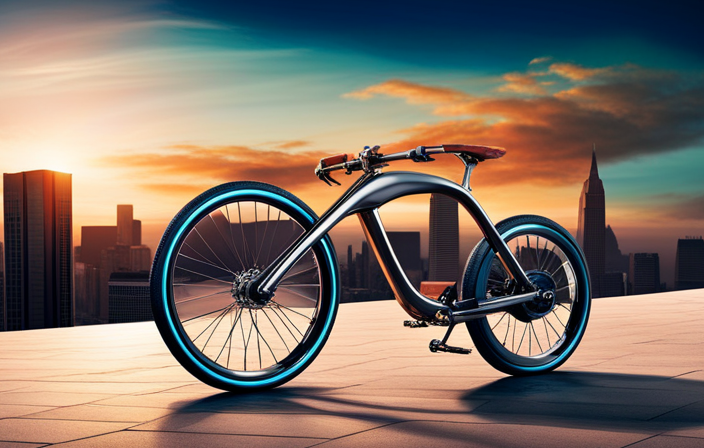
 Electric Bike3 months ago
Electric Bike3 months agoHow To Turn Your Bike Into An Electric Generator
-
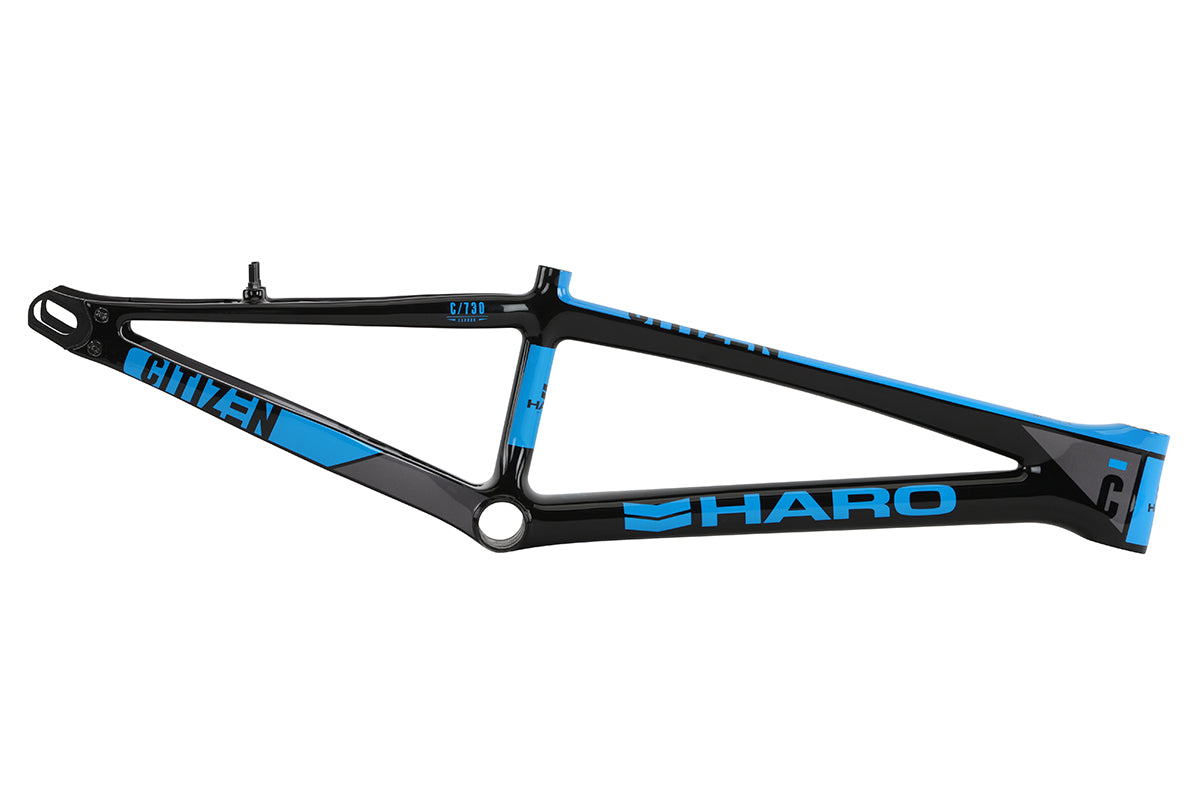
 Bike2 months ago
Bike2 months agoAdvantages and Disadvantages of a Carbon Fiber Bike Frame
-

 Beginners Guides2 months ago
Beginners Guides2 months agoA Guide to Right Hybrid Bike Posture: How to Sit on the Bike for Optimal Performance
-
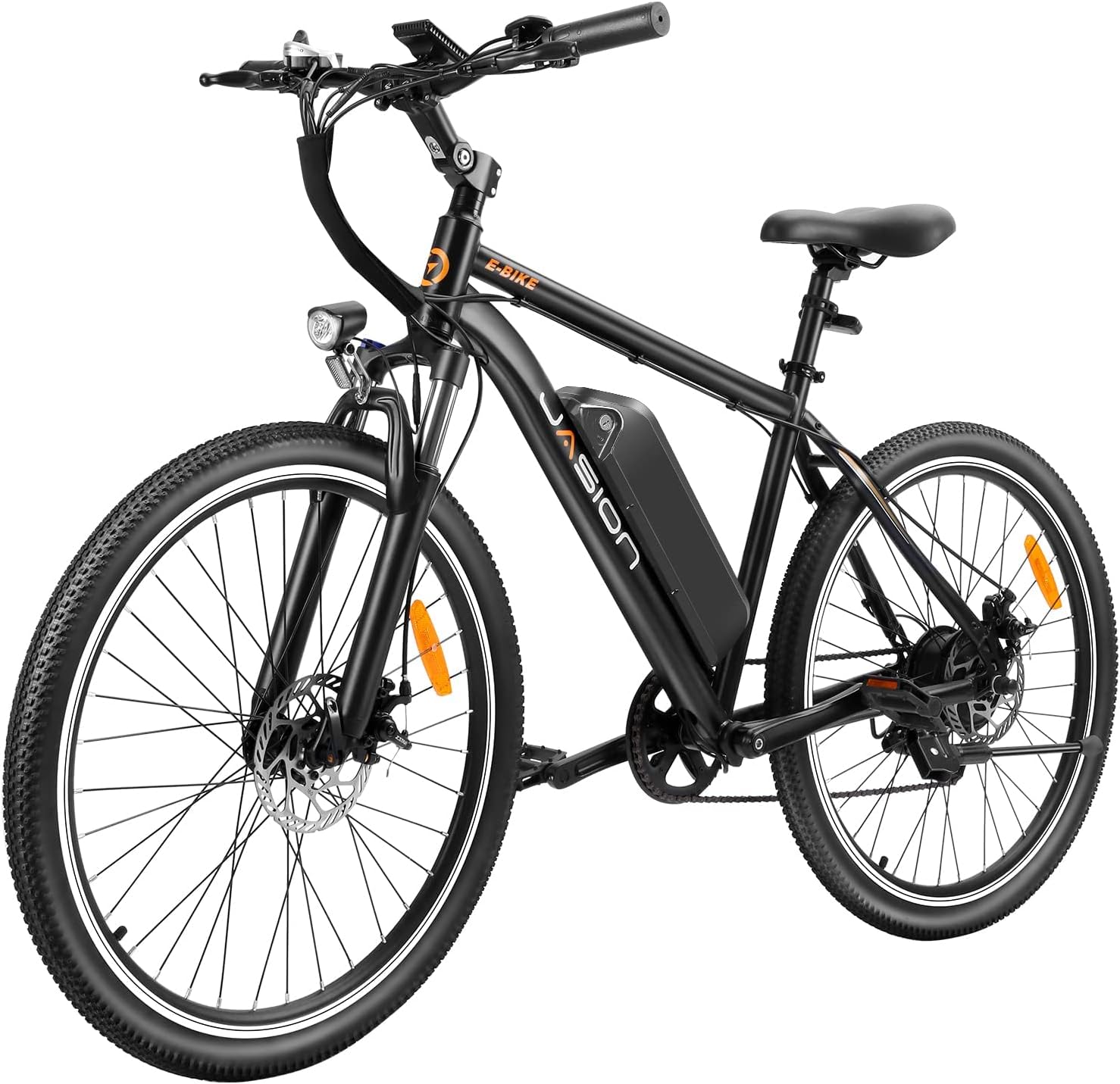
 Vetted3 months ago
Vetted3 months agoJasion EB5 Electric Bike Review: Commute Mountain Bike for Adults
-
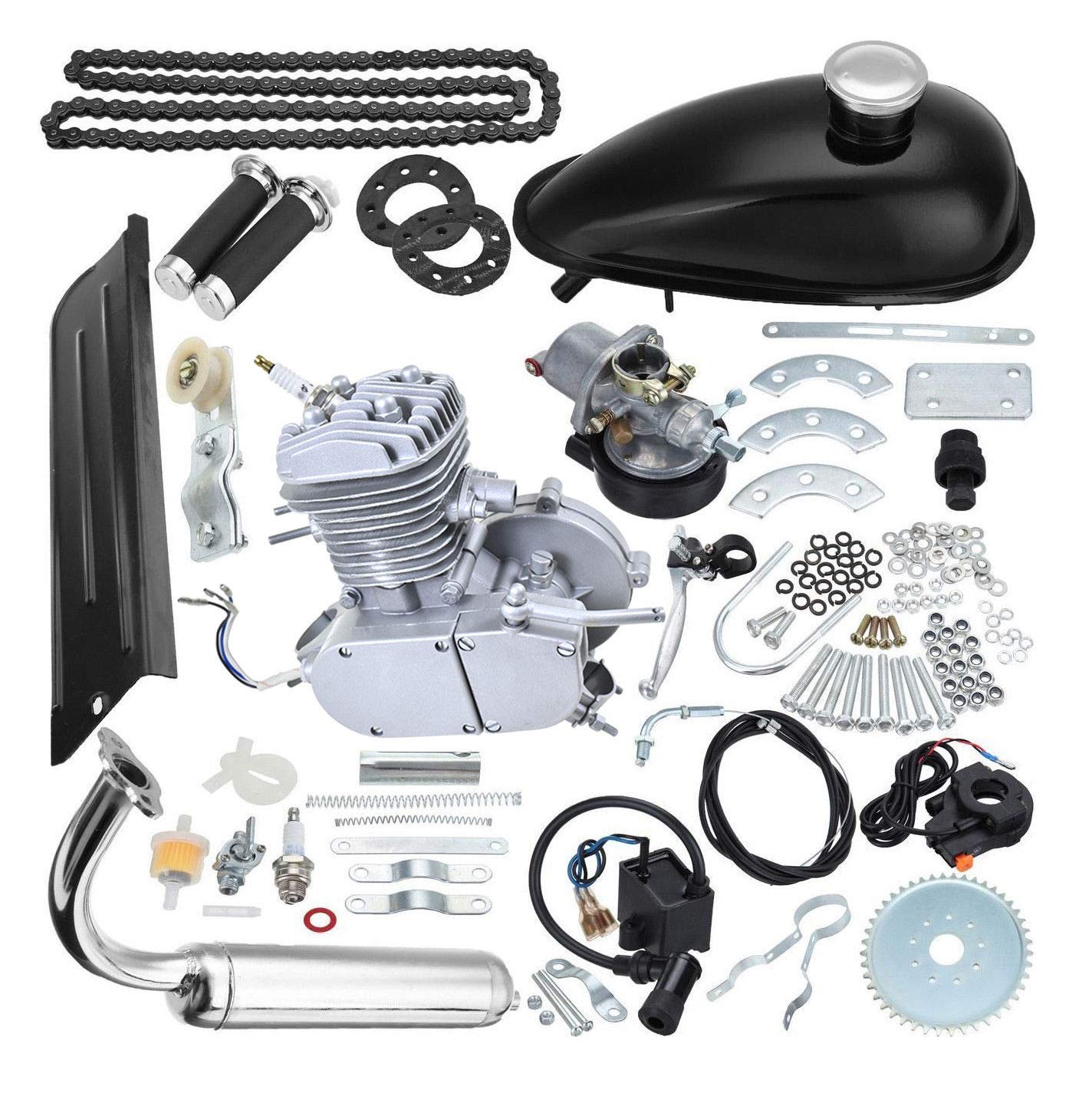
 Vetted3 months ago
Vetted3 months agoReview: 80CC Motorized Bicycle Gas Engine Kit with Performance Carburetor
-
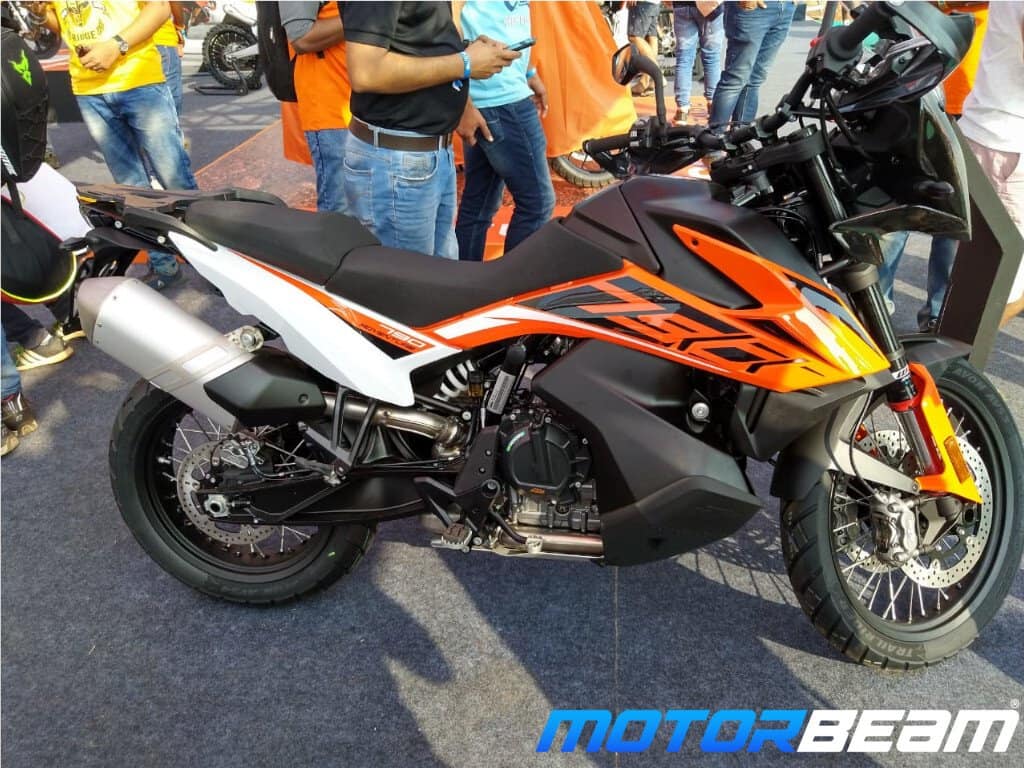
 Beginners Guides2 months ago
Beginners Guides2 months agoWhere Are KTM Motorcycles Made?
-

 Vetted3 months ago
Vetted3 months agoFREESKY Electric Bike Review: 1000W Motor, 48V Battery, Full Suspension
-

 Vetted2 months ago
Vetted2 months ago12 Best Men's Cycling Bib Shorts for Comfort and Performance – Reviewed & Rated





